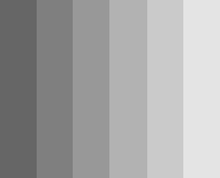
In neurobiology, lateral inhibition is the capacity of an excited neuron to reduce the activity of its neighbors. Lateral inhibition disables the spreading of action potentials from excited neurons to neighboring neurons in the lateral direction. This creates a contrast in stimulation that allows increased sensory perception. It is also referred to as lateral antagonism and occurs primarily in visual processes, but also in tactile, auditory, and even olfactory processing.[1] Cells that utilize lateral inhibition appear primarily in the cerebral cortex and thalamus and make up lateral inhibitory networks (LINs).[2] Artificial lateral inhibition has been incorporated into artificial sensory systems, such as vision chips,[3] hearing systems,[4] and optical mice.[5][6] An often under-appreciated point is that although lateral inhibition is visualised in a spatial sense, it is also thought to exist in what is known as "lateral inhibition across abstract dimensions." This refers to lateral inhibition between neurons that are not adjacent in a spatial sense, but in terms of modality of stimulus. This phenomenon is thought to aid in colour discrimination.[7]
- ^ Yantis, Steven (2014). Sensation and Perception. New York, NY: Worth Publishers. p. 77.
- ^ Shamma, Shihab A. (3 January 1985). "Speech processing in the auditory system II: Lateral inhibition and the central processing of speech evoked activity in the auditory nerve". The Journal of the Acoustical Society of America. 78 (5): 1623. Bibcode:1985ASAJ...78.1622S. doi:10.1121/1.392800. PMID 3840813.
- ^ Alireza Moini (2000). Vision Chips. Springer. ISBN 0-7923-8664-7.
- ^ Malsburg, Christoph von der, ed. (1996). Artificial neural networks: ICANN 96: 1996 international conference, Bochum, Germany, July 16-19, 1996: proceedings. Lecture notes in computer science. Berlin ; New York: Springer. ISBN 978-3-540-61510-1.
{{cite book}}: CS1 maint: date and year (link) - ^ Alireza Moini (1997). "Vision Chips" (PDF).
- ^ Richard F. Lyon (1981), "The Optical Mouse and an Architectural Methodology for Smart Digital Sensors" (PDF), Xerox PARC report VLSI-81-1
- ^ RHS Carpenter (1997). Neurophysiology. Arnold, London.